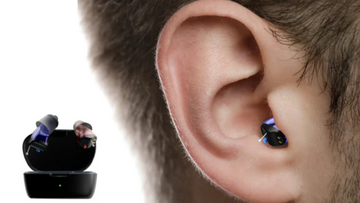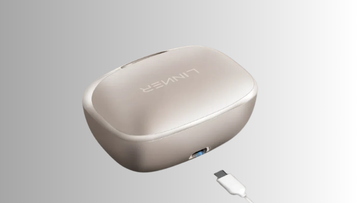Ear pressure often builds when the Eustachian tubes—tiny tunnels connecting your middle ear to the back of your nose—get clogged by mucus, inflammation, or rapid altitude shifts. Left unchecked, trapped fluid and air can lead to sharp discomfort, temporary hearing loss, and even vertigo. Tackling this “plugged” feeling quickly not only restores your sense of balance but also wards off more severe issues down the line.
If you’re experiencing lightheadedness along with that full-ear sensation, exploring common dizziness causes can offer valuable clues before you dive into relief strategies. From simple jaw stretches and the Valsalva maneuver to steam inhalation and targeted over-the-counter ear drops, the techniques below will guide you step by step toward clearing your ears—and your head—so you can get back to feeling like yourself.
Understanding Ear Pressure: Causes & When to Act
Why Your Ears “Plug” Up
Most of us first notice ear pressure when the tiny Eustachian tubes—responsible for equalizing middle-ear air pressure—become blocked. Rapid altitude shifts (think airplane takeoff or mountain drives) force these tubes to open and close abruptly; if they fail to open, you feel that camping-in-a-tunnel effect. Infections, colds, or seasonal allergies can inflame and swell the tube lining, trapping air and fluid behind the eardrum. At the same time, excess earwax can compact and press directly against the eardrum, mimicking that same nagging fullness. Finally, any illness that causes mucus buildup—sinus infections, even a stubborn cold—can lead to fluid retention in the middle ear, adding weight and pressure until the tubes drain properly.
Warning Signs to Seek Help
While a quick at-home “pop” or warm compress often brings instant ear pressure relief, certain red flags mean it’s time to see a professional. If pain intensifies instead of easing, or if you notice reduced hearing that doesn’t rebound after a gentle jaw-wriggle or Valsalva maneuver, infection or impaction may be to blame. The sudden onset of vertigo—when the room feels like it’s spinning—and any discharge from the ear canal (clear, bloody, or pus-like) also demand prompt evaluation. And if that blocked-up feeling lingers beyond seven days despite home remedies, booking an appointment can prevent complications such as chronic Eustachian tube dysfunction or middle-ear infection.
Instant Ear Pressure Relief Techniques
“Pop” Your Ears Naturally
When you need swift relief, simple jaw and throat movements can work wonders. Swallowing triggers your muscles to tug open the Eustachian tubes—try sipping water or chewing gum to keep the action going. Yawning has a similar effect: open wide and hold your jaw at the bottom of the yawn for a few seconds before closing. If those don’t do the trick, the Valsalva maneuver can help release trapped air: gently pinch your nostrils shut, close your mouth, and exhale softly into your nose. Be cautious—forceful exhalation can damage delicate inner structures, so a gentle, steady breath is all you need to hear that satisfying “pop.”
Warm Compress & Gentle Massage
For pressure caused by fluid retention—especially common when you’re sick—a warm compress may be your best over-the-counter remedy. Dampen a clean washcloth with warm (not hot) water, wring out excess moisture, and lay it over the affected ear for five minutes. The heat loosens thickened mucus and encourages natural drainage. While the warm towel is in place, use your fingertips to massage the area just below and behind the ear in small, circular motions. This not only soothes tense muscles but also helps guide fluid downward and out of the middle ear.
Head Movements & Nasal Blows
Sometimes gravity and gentle motion are all you need to shift stubborn fluid. Tilt your head so your ear faces the floor, then slowly turn it forward and backward—repeat this a few times to coax fluid toward the Eustachian tube opening. Alternating sides can prevent dizziness. Pair these maneuvers with careful nasal blowing: press one nostril closed and blow lightly through the other, then switch. This staged approach balances pressure without overstressing your tubes, making it one of the easiest ways to release pressure in ears safely.
Home Remedies for Ear Pressure When Sick
When congestion from a cold or allergy attack blocks your Eustachian tubes, targeted home remedies can provide relief without harsh chemicals.
Stay Hydrated & Steam Up
Drinking warm fluids—herbal tea with honey or broth—thins mucus, making it easier to drain. Inhale steam from a bowl of hot water or during a hot shower; the moist heat helps reduce inflammation in nasal passages and middle-ear tubes.
Over-the-Counter Aids
- Nasal Decongestant Sprays: Use for no more than three days to avoid rebound congestion.
- Oral Decongestants: Pseudoephedrine can relieve swelling, but check with your provider if you have high blood pressure.
- Saline Rinse: A gentle neti pot or nasal spray flushes allergens and mucus, helping to open tube passages.
Gentle Jaw Exercises
Opening and closing your mouth as if chewing exaggeratedly can stimulate tube movement. Repeat 10–15 times to encourage pressure equalization once or twice daily.
Elevate Your Head
Sleeping with your head propped on an extra pillow allows gravity to aid drainage and can reduce that waking “plugged” feeling.
By combining these remedies—hydration, steam, OTC aids, and simple exercises—you’ll promote natural drainage and relief from ear pressure when sick, without needing a prescription.
Medical Treatments for Persistent Ear Pressure
Persistent or severe ear pressure—especially when paired with pain, hearing loss, or significant dizziness—warrants professional attention. If home remedies aren’t enough, don’t hesitate to seek care at a specialized clinic such as Moore MyoWorx.
In a clinical setting, you may encounter:
- Ear Drops for Wax Removal: Over-the-counter or prescription formulations that soften and loosen impacted cerumen. Always follow the instructions and never probe your ear canal with cotton swabs.
- Professional Ear Irrigation: A controlled, gentle flush of warm water or saline to clear stubborn blockages without damaging delicate structures.
- ENT Evaluation & Treatment: An otolaryngologist can assess the Eustachian tube function, prescribe medicated nasal sprays or decongestants, and, in some cases, perform minor in-office procedures (e.g., myringotomy with tube placement) to restore proper aeration and relieve chronic pressure.
Preventing Future Ear Pressure
Maintain clear passages and balanced ear health with simple habits:
Hydration & Allergy Control: Drink plenty of water daily and use antihistamines or nasal corticosteroid sprays during allergy season to keep Eustachian tubes clear.
Mind Your Altitude Changes: When flying or driving in mountainous areas, ascend and descend slowly—stop to swallow or yawn every few minutes to equalize pressure.
Nasal Hygiene Routine: Rinse with saline or use a gentle neti pot during colds and allergies to flush mucus and minimize tube blockages.
Final Thoughts: Keeping Your Ears Pressure-Free
From quick “ear pops” and warm compresses to targeted home remedies and professional care, you now have a clear roadmap for how to relieve pressure in your ears. Start with the instant relief techniques, follow up with home treatments when you’re under the weather, and consult a healthcare professional if discomfort persists. Here’s to clear, comfortable hearing—every single day!






